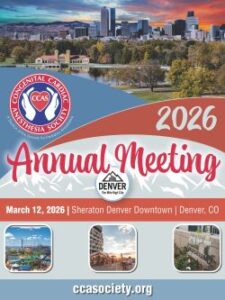Author: Morgan Ulloa, MD - Children’s Hospital Los Angeles - Los Angeles, CA
A 12 year old, non-diabetic, 45kg female patient with Hx of hypoplastic left heart syndrome s/p palliation to Fontan underwent an uneventful cardiac catheterization. The next morning, she is found to be nauseated and confused. Physical examination demonstrates tachypnea with deep shallow breathing, tachycardia, and abdominal pain with palpation. Laboratory evaluation reveals a pH 7.3, serum glucose 105mg/dl, and serum positive for ketones. Which of the following home medications continued in the perioperative period is MOST LIKELY associated with her current presentation?
EXPLANATION
Empagliflozin is a member of the Sodium Glucose Cotransporter 2 (SGLT-2) inhibitors, colloquially referred to as “flozins”. The earliest US FDA approved medication of this class, dapagliflozin, has been in clinical use since 2012.1 As their class name implies, these medications inhibit the sodium dependent glucose transport protein SGLT-2 which is in the first segment of the proximal convoluted tubule within the kidney, and is responsible for ~90% of glucose reabsorption filtered by the glomeruli. Inhibition of this protein leads to glucosuria and resultant lowering of the serum glucose concentration. In this role, these medications are primarily and predominantly utilized for the management of type 2 diabetes mellitus.
Since 2022, empagliflozin has been FDA approved for the management of adults with heart failure with preserved ejection fraction (HFpEF) following the results of the EMPEROR-Preserved clinical trial.2 This randomized, double blinded study compared the use of daily empagliflozin versus placebo on the primary outcome of composite cardiovascular death or hospitalization for heart failure in an adult population. This investigation demonstrated a statistically significant reduction of composite cardiovascular death or hospitalization for the empagliflozin group. This effect was primarily due to the lower risk of hospitalization and was notably independent of diabetes status.3 Subsequent investigations have also demonstrated likely benefit to the patient population with heart failure with reduced ejection fraction. The mechanisms of this benefit are as of yet not entirely understood, but hypotheses include direct effects on cardiac myocyte metabolism, growth, and function that may diminish pathophysiologic remodeling and optimize energy substrate utilization, as well as protective effects on the endothelial glycocalyx from reduced damage associated with hyperglycemia, and its role as a diuretic normalizing preload for patients with congestive heart failure. 4
Although empagliflozin received FDA approval in June of 2023 for the management of pediatric patients 10 years and older, it has not received specific FDA approval for pediatric patients with heart failure. Nonetheless, empagliflozin is being prescribed to pediatric patients with heart failure both with and without congenital heart disease and will likely become more commonly encountered in clinical settings for the pediatric cardiac anesthesiologist. The perioperative concerns surrounding “Flozins” center on the increased risk of euglycemic diabetic ketoacidosis (EDKA). This risk of developing EDKA exists regardless of duration of exposure. Since SGLT-2 inhibitors lead to diuresis and loss of glucose, a state of carbohydrate starvation, hypovolemia, and an imbalance of metabolic regulatory mechanisms may lead to dehydration and ketosis despite normoglycemia, which are more likely to occur in the perioperative setting. For this reason, several societies and regulatory agencies have recommended perioperative cessation of SGLT-2 inhibitors.5 The current FDA recommendations are to hold SGLT-2 inhibitors for 3 days prior to scheduled procedures/surgery or for 4 days in the case of ertugliflozin (Steglatro). All patients taking SGLT-2 inhibitors should be monitored with an increased index of suspicion for the development of EDKA, especially for patients unable to hold their dosages secondary to emergent/urgent circumstances.
The diagnosis of EDKA should be suspected when signs/symptoms akin to DKA present and further confirmed with laboratory evaluation demonstrating high anion-gap metabolic acidosis and ketosis in the setting of capillary blood glucose <250mg/dL.5 In the scenario presented, the most likely drug to induce EDKA is the SLGT-2 inhibitor. GLP-1 receptor agonists may also cause EDKA, but less commonly so. Sacubitril is a neprilysin inhibitor which is commercialized as a combination drug with valsartan to treat heart failure, and does not significantly impact glucose metabolism.
REFERENCES
1. Grube PM, Beckett RD. Clinical studies of dapagliflozin in pediatric patients: a rapid review. Ann Pediatr Endocrinol Metab. 2022;27:265-72.
2. Anker SD, Butler J, Filippatos G, et al. Empagliflozin in Heart Failure with a Preserved Ejection Fraction. N Engl J Med. 2021;385(16):1451-1461. doi:10.1056/NEJMoa2107038
3. Teo YH, Teo YN, Syn NL, et al. Effects of Sodium/Glucose Cotransporter 2 (SGLT2) Inhibitors on Cardiovascular and Metabolic Outcomes in Patients Without Diabetes Mellitus: A Systematic Review and Meta-Analysis of Randomized-Controlled Trials. J Am Heart Assoc. 2021;10(5):e019463. doi:10.1161/JAHA.120.019463
4. Hernandez VK, Parks Melville BT, Siwaju K. How Does It Work? Unraveling the Mysteries by Which Empagliflozin Helps Diabetic and Non-diabetic Patients With Heart Failure. Cureus. 2023;15(9):e45290. Published 2023 Sep 15. doi:10.7759/cureus.45290
5. Hwang SM, Abcejo AS, Jacob AK, et al. Editorial: Euglycemic ketoacidosis concerns in perioperative use of SGLT2 inhibitors: re-examining current recommendations. APSF Newsletter. 2025:13–15.
